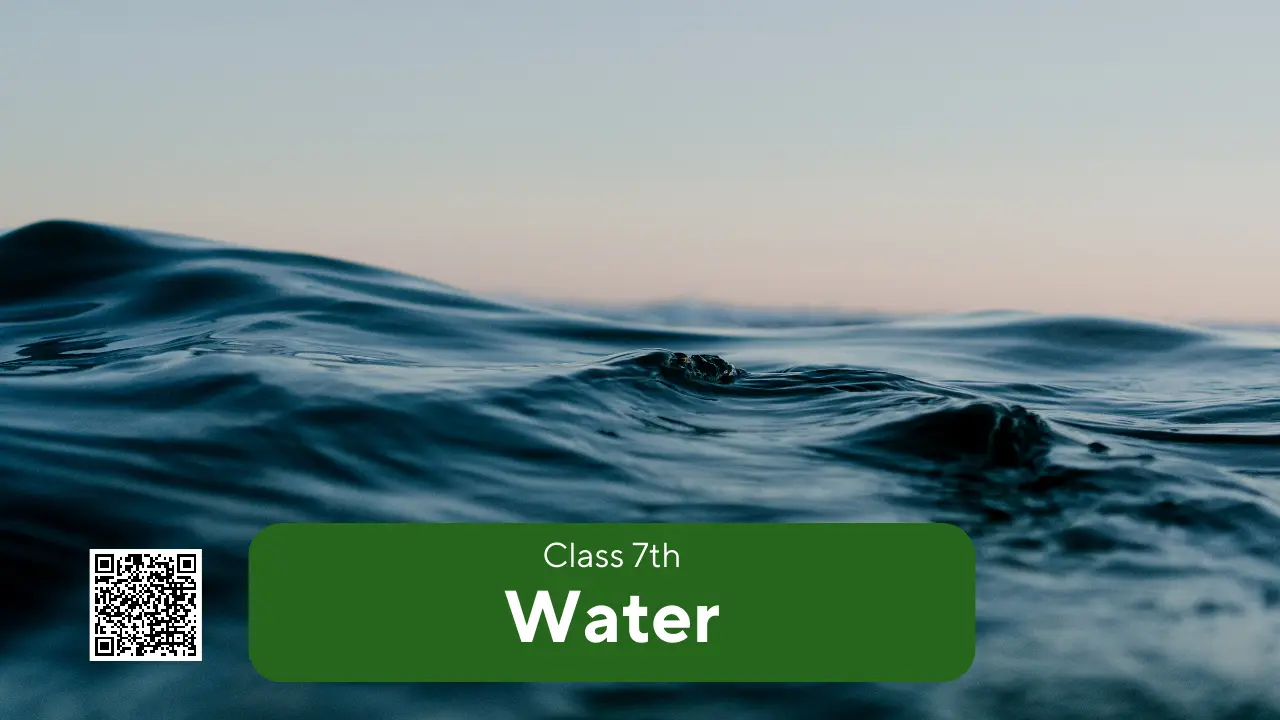
NCERT Solutions for Class 7 Social Studies Chapter 5 – Water

Our Earth’s surface is covered with 71 per cent of water. The water cycle is the process by which water continually changes its form and circulates between oceans, the atmosphere and land. The major sources of freshwater are the rivers, ponds, springs and glaciers. The movements that occur in oceans can be broadly categorised as waves, tides and currents.
1. Answer the following questions.
(i) What is precipitation?
Answer: The sun’s heat vaporises water into vapour. This vapour cools down and condenses to become clouds. This may then fall on the surface of Earth in the form of rain, snow or sleet. This phenomenon of water falling back onto the surface of the earth in the form of rain, snow or sleet is called precipitation.
NCERT Solutions for Class 7 Social Studies Chapter 4 – Air
(ii) What is the water cycle?
Answer: The process by which water continually changes its form and circulates between oceans, atmosphere and land is known as the water cycle.
(iii) What are the factors affecting the height of the waves?
Answer: The factors affecting the height of the waves are as follows:
- Speed of the wind
- Earthquakes, volcanic eruptions or underwater landslides
(iv) Which factors affect the movement of ocean water?
Answer: The factors affecting the movement of ocean water are as follows:
- Temperature
- The gravitational pull of the sun and moon
- Warm and cold currents
- Wind
(v) What are tides and how are they caused?
Answer: The rhythmic rise and fall of ocean water, twice in a day, is called a tide. Tides are caused by the gravitational force exerted by the sun and the moon on the Earth’s surface.
(vi) What are ocean currents?
Answer: The streams of water flowing constantly on the ocean surface in a definite direction are called ocean currents. The ocean currents may be warm or cold.
2. Give reasons.
(i) Ocean water is salty.
Answer: Ocean water is salty because it contains a large amount of salt dissolved in it. The salt present in ocean water is mostly sodium chloride or the common salt that we consume.
(ii) The quality of water is deteriorating.
Answer: The water quality is deteriorating because of human activities like
- Deforestation
- Throwing garbage and other waste in water bodies
- Chemicals released from industries
- Increased use of fertilisers and pesticides
“UNDERSTANDING THE COMPLEX FACTORS BEHIND CLIMATE CHANGE”
3. Tick the correct answer.
(i) The process by which water continually changes its form and circulates between oceans, atmosphere and land
(a) Water cycle
(b) Tides
(c) Ocean currents
Answer: a
(ii) Generally, the warm ocean currents originate near
(a) Poles
(b) Equator
(c) None of these
Answer: b
(iii) The rhythmic rise and fall of ocean water twice in a day is called
(a) Tide
(b) Ocean current
(c) Wave
Answer: a
4. Match the following.
| (i) Caspian Sea | (a) Largest lake |
| (ii) Tide | (b) Periodic rise and fall of water |
| (iii) Tsunami | (c) Strong seismic waves |
| (iv) Ocean currents | (d) Streams of water moving along definite paths |
| (e) Water cycle |
Answer:
| (i) Caspian Sea | (a) Largest lake |
| (ii) Tide | (b) Periodic rise and fall of water |
| (iii) Tsunami | (c) Strong seismic waves |
| (iv) Ocean currents | (d) Streams of water moving along definite paths |
Tag:Class 7th, Social Science



